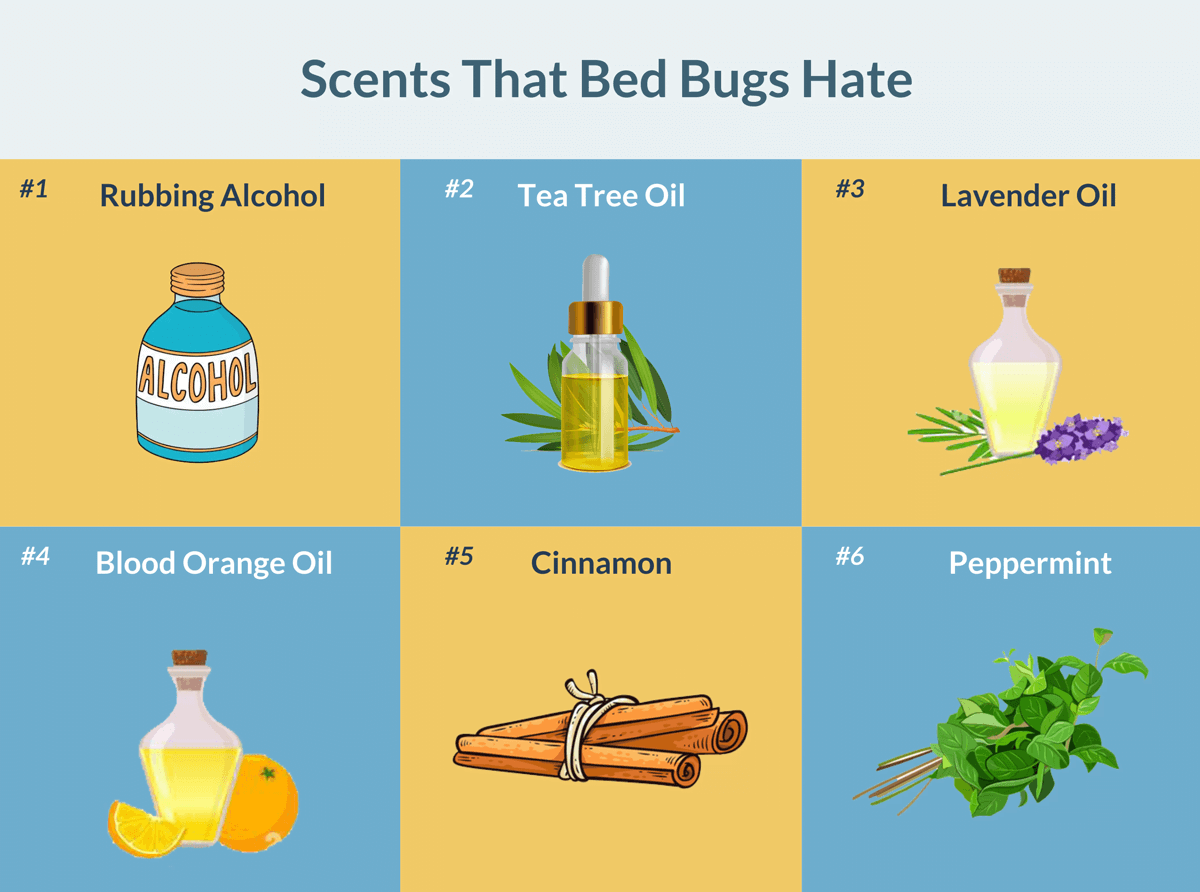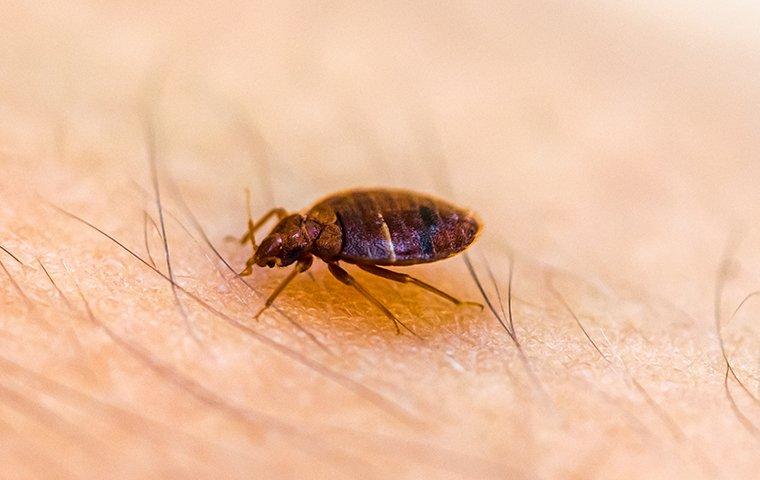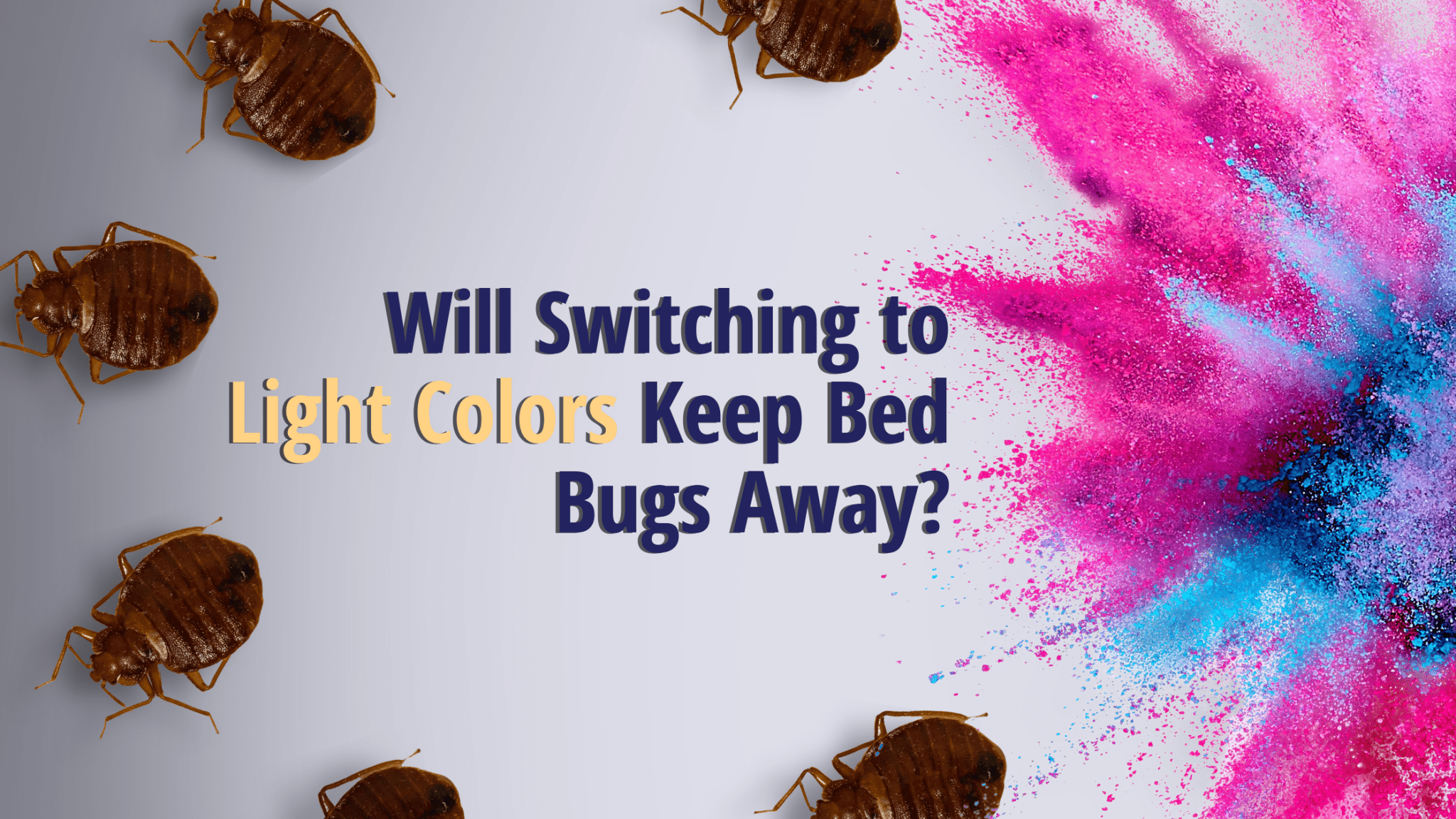To keep bed bugs away from your bed, regularly vacuum and clean bedding and surrounding areas. Use mattress encasements.
Bed bugs are pesky insects that can quickly infest your sleeping space, causing discomfort and inconvenience. By following simple prevention methods, you can effectively keep these unwanted guests at bay. From the regular cleaning of your bedding and vacuuming the surrounding areas to the use of protective mattress encasements, these proactive steps can help create a barrier against bed bug infestations.
Taking these preventative measures not only ensures a peaceful night’s sleep but also promotes a healthy and hygienic living environment for you and your family. Learn how to protect your sanctuary from these tiny invaders for a peaceful and bug-free sleeping experience.
Identifying Bed Bugs
When it comes to keeping bed bugs away from your bed, one of the first steps is to identify these pesky creatures. Knowing what bed bugs look like and their common hiding spots can help you take proactive measures to prevent an infestation. In this section, we will explore the physical characteristics of bed bugs and where they are most likely to be found.
Physical Characteristics
Bed bugs are small, oval-shaped insects that are typically reddish-brown in color. They are about the size of an apple seed, ranging from 3 to 5 millimeters in length. These insects have a flat body and are very good at hiding in small cracks and crevices.
Here are some physical characteristics that can help you identify bed bugs:
- Color: Bed bugs are commonly a reddish-brown color, but they may appear more brown or tan after feeding.
- Shape: They have a flat, oval-shaped body with a segmented appearance. The body becomes elongated and swollen after a blood meal.
- Size: Adult bed bugs typically measure between 3 to 5 millimeters in length, similar in size to an apple seed.
- Antennae: They have short, segmented antennae that are located on their head.
Common Hiding Spots
Bed bugs are not limited to your bed alone – they can infest other areas of your home. While they prefer to be close to their human hosts, they can also be found in other furniture, walls, and even electrical outlets. Here are some common hiding spots bed bugs tend to seek out:
- Mattresses and Box Springs: Bed bugs often infest the seams, tufts, and folds of mattresses and box springs. Check for dark spots, which could indicate bed bug fecal stains.
- Bed Frames and Headboards: These areas provide numerous hiding spots for bed bugs due to their cracks and crevices.
- Furniture: Upholstered furniture, especially in bedrooms or living rooms, can harbor bed bugs.
- Behind Wallpaper and Wall Hangings: Bed bugs can hide behind peeling wallpaper and wall hangings, as well as in electrical outlets.
- Carpets and Rugs: These provide warmth and hiding places for bed bugs.
- Clothing and Luggage: Bed bugs can hitch a ride in clothing, luggage, or other personal belongings and infest new areas.
Knowing where bed bugs are likely to hide can help you take preventative measures to keep them away from your bed and other areas of your home. Regularly inspecting these hiding spots can help you catch an infestation early and take appropriate action.

Credit: privateexterminator.com
Preventing Bed Bug Infestation
Keeping bed bugs away from your bed starts with simple yet effective preventative measures that can save you from a stressful infestation. Implementing these methods can help you create a bed bug-free zone in your sleeping area. Let’s explore some practical strategies to prevent bed bugs from invading your bed.
Regular Cleaning And Decluttering
Regular cleaning and decluttering your bedroom are essential in preventing bed bugs from finding hiding spots and reproducing. Vacuum the floors, especially around the bed frame, regularly to remove any potential bed bugs or eggs. Wash your bedding, pillows, and stuffed toys in hot water frequently to kill any lurking bed bugs.
Using Protective Covers
Invest in protective covers for your mattress and pillows to create a barrier that bed bugs cannot penetrate. These covers not only protect your bedding from bed bugs but also make it easier to spot any signs of infestation. Ensure the covers are zippered and made of high-quality, durable materials to fully encase your mattress and pillows.
Natural Remedies For Bed Bug Prevention
Discover natural methods to deter bed bugs from invading bedrooms. Implement essential oils like lavender or tea tree oil as a repellent. Regularly clean bedding and vacuum mattresses to prevent infestations.
Natural Remedies for Bed Bug PreventionEssential Oils Essential oils such as lavender and tea tree oil can act as natural bed bug repellents due to their strong scents.Diatomaceous Earth Diatomaceous Earth is a fine powder composed of fossilized algae that can be effective in killing bed bugs by dehydrating them.Using these natural remedies can help in keeping bed bugs away from your bed.Professional Extermination Methods
When it comes to dealing with a bed bug infestation, professional extermination methods are often the best solution. These methods are designed to effectively eliminate bed bugs and prevent their return, providing peace of mind and a good night’s sleep. Professional exterminators utilize various techniques, including heat treatment and the use of pesticides, to tackle the problem head-on. Let’s explore these methods in more detail.
Heat Treatment
Heat treatment is an effective way to kill bed bugs in all stages of their lifecycle, from eggs to adults. This method involves using specialized equipment to raise the temperature of the infested area to lethal levels for the bed bugs. The heat penetrates even the tiniest crevices where these pests hide, ensuring a thorough extermination process. Typically, the temperature is raised to around 120°F, which is known to be lethal to bed bugs. This method is not only effective but also environmentally friendly, as it does not involve the use of chemicals.
Pesticides
The use of pesticides is another common professional extermination method. These chemicals are specifically formulated to target and kill bed bugs while minimizing their harmful effects on humans and pets. Professional exterminators have the knowledge and expertise to select and apply these pesticides safely and effectively. The most commonly used pesticides for bed bugs include pyrethroids and neonicotinoids. These chemicals work by disrupting the bed bugs’ nervous system, leading to their demise. However, it is important to note that pesticides should always be used with caution and according to the manufacturer’s instructions.
Additionally, professional exterminators may combine heat treatment and pesticides for a comprehensive approach when dealing with severe infestations. This combination ensures maximum effectiveness and a higher chance of complete eradication.
To summarize, when facing a bed bug infestation, professional extermination methods offer the best chance for elimination. Heat treatment and the use of pesticides are two common approaches used by exterminators to eradicate these pests. Whether you opt for heat treatment, the application of pesticides, or a combination of both, seeking assistance from professionals ensures the most efficient and successful extermination.
Travel Precautions
To keep bed bugs away from your bed while traveling, take preventive measures such as inspecting the bedding and mattress, keeping luggage off the floor, and using protective covers. Vacuuming and washing your clothes in hot water can also help eliminate potential hitchhikers.
Regularly checking for signs of bed bugs is crucial to ensure a peaceful sleep while traveling.
Inspecting Hotel Rooms
When staying in hotels, it is crucial to inspect the room for any signs of bed bugs to prevent bringing them home. Use a flashlight to check for tiny, rust-colored stains on sheets, mattresses, and furniture.
Remember to also look behind headboards and inspect the seams of upholstered furniture. If you notice any suspicious signs, request a different room or consider changing hotels altogether.
Packing And Unpacking Tips
When packing for travel, place your clothes and belongings in sealed plastic bags to limit exposure to potential bed bugs in your accommodation. On arrival, keep your luggage off the bed and store it on a luggage rack, or even in the bathroom, until you’ve inspected the room.
Ensure that your clothing doesn’t come into contact with the floor or furniture. It’s also advisable to unpack and inspect your clothes directly into the hotel’s washing machine, if possible, to kill any bed bugs that may have hitched a ride.

Credit: www.lakenormanpest.com
Early Detection And Action
Early detection and action are key in preventing a full-blown bed bug infestation. Acting promptly at the first sign of a potential issue can greatly minimize the impact and spread of these pesky critters. By staying vigilant and knowing what to look for, you can effectively keep bed bugs away from your bed and home.
Signs Of Bed Bug Infestation
Early detection involves recognizing the signs of a bed bug infestation. Common indicators include small reddish-brown bugs or their shed skins on the mattress, bed frame, or nearby furniture. You may also notice tiny dark spots on sheets, indicating bed bug excrement. Musty odor may also be present, a sign of a large infestation.
Immediate Steps To Take
If you suspect a bed bug infestation, take immediate action. Start by inspecting your sleeping area thoroughly, including the mattress seams, bed frame, and nearby furniture. Collect any evidence of bed bugs such as live bugs, skins, or excrement in a clear plastic bag for identification. Wash and dry all bedding, clothing, and fabrics on the hottest settings to kill any bugs and eggs. And contact a professional pest control service to assess and address the situation.
Effective Bed Bug Management
Bed bugs are persistent pests that can quickly infest your bed and cause discomfort and irritation. To keep these troublesome bugs away from your sleeping space, it is essential to implement effective bed bug management strategies. Regular inspections, along with contacting professional pest control services, can help you in your battle against bed bugs.
Regular Inspections
Regular inspections of your bed and surrounding areas are crucial to detect any signs of a bed bug infestation. By keeping an eye out for these pests, you can catch the problem early and prevent it from spreading. Inspect your mattress, box springs, headboard, and any crevices or cracks where bed bugs could hide.
You can also inspect your bedding, including sheets, pillowcases, and blankets, for any telltale signs of bed bug activity. Look for rust-colored stains or dark spots, which indicate bed bug excrement. You may also come across discarded bed bug skins or even the bugs themselves during your inspections.
Contacting Pest Control
If you suspect or confirm a bed bug infestation in your bed, it is crucial to contact a professional pest control service. Bed bugs are resilient and difficult to eradicate on your own. Pest control experts have the knowledge, experience, and specialized tools necessary to eliminate bed bugs effectively.
When you reach out to a pest control company, they will conduct a thorough inspection to confirm the presence of bed bugs. They will then develop a tailored treatment plan to address the infestation. This may involve heat treatment, pesticide application, or a combination of methods, depending on the severity of the problem.
Professional pest control services can also provide guidance on proactive measures you can take to prevent future bed bug infestations. They can advise on mattress protectors, encasements, and other preventive products to help safeguard your bed and create a bed bug-free environment.
In conclusion, effective bed bug management is key to keeping these pests away from your bed. Regular inspections help you spot any signs of infestation early on, while contacting professional pest control services ensures a thorough and targeted eradication treatment. By taking these steps, you can sleep soundly knowing that your bed is free from the annoyance of bed bugs.
Educating Others And Community Involvement
When it comes to keeping bed bugs away from your bed, educating others and getting involved in the community can be effective strategies in prevention.
Sharing Knowledge
- Teach family and friends about signs of bed bugs.
- Inform neighbors on prevention methods.
- Spread awareness through social media platforms.
Participating In Awareness Programs
- Join local initiatives on bed bug prevention.
- Attend community workshops and seminars.
- Collaborate with pest control professionals to educate the community.

Credit: bedbugbbq.com
Frequently Asked Questions On How To Keep Bed Bugs Away From Bed?
What Are The Signs Of Bed Bug Infestation?
Bed bugs leave behind small red welts on the skin, tiny bloodstains on bedding, and a musty odor in the room. Look for dark spots on mattress seams or in corners of the bed frame.
How Can I Prevent Bed Bugs From Infesting My Bed?
To prevent bed bugs, regularly vacuum and inspect your mattress, encase it in a bed bug-proof cover, and keep your bed away from the walls. Moreover, routinely wash and dry bedding at high temperatures to kill any potential bed bugs.
Can Essential Oils Keep Bed Bugs Away From The Bed?
Certain essential oils, such as lavender, peppermint, and tea tree oil, can act as natural bed bug repellents. Mix a few drops with water and spray around your bed or use a diffuser to keep bed bugs at bay.
Do Bed Bug Mattress Covers Really Work?
Yes, bed bug mattress covers effectively trap and prevent bed bugs from accessing or escaping the mattress, offering a protective barrier against infestations.
Conclusion
Preventing bed bugs from infiltrating your bed involves a combination of proactive measures and regular maintenance. By keeping your sleeping area clean and clutter-free, regularly washing your bedding, and inspecting your mattress and furniture for signs of infestation, you can significantly reduce the risk of bed bugs.
Additionally, sealing cracks and crevices, using protective covers, and vacuuming regularly can further deter these unwanted pests. By following these steps diligently, you can enjoy a peaceful and bed bug-free sleep environment.

I’m MD Tanvir, and I bring years of expertise gained from working closely with pest control companies to the forefront. My journey in the industry has inspired me to launch Bug Battler, a platform aimed at equipping people with the know-how to combat pests autonomously. Through Bug Battler, I aim to empower individuals with practical insights to tackle pest infestations effectively.

